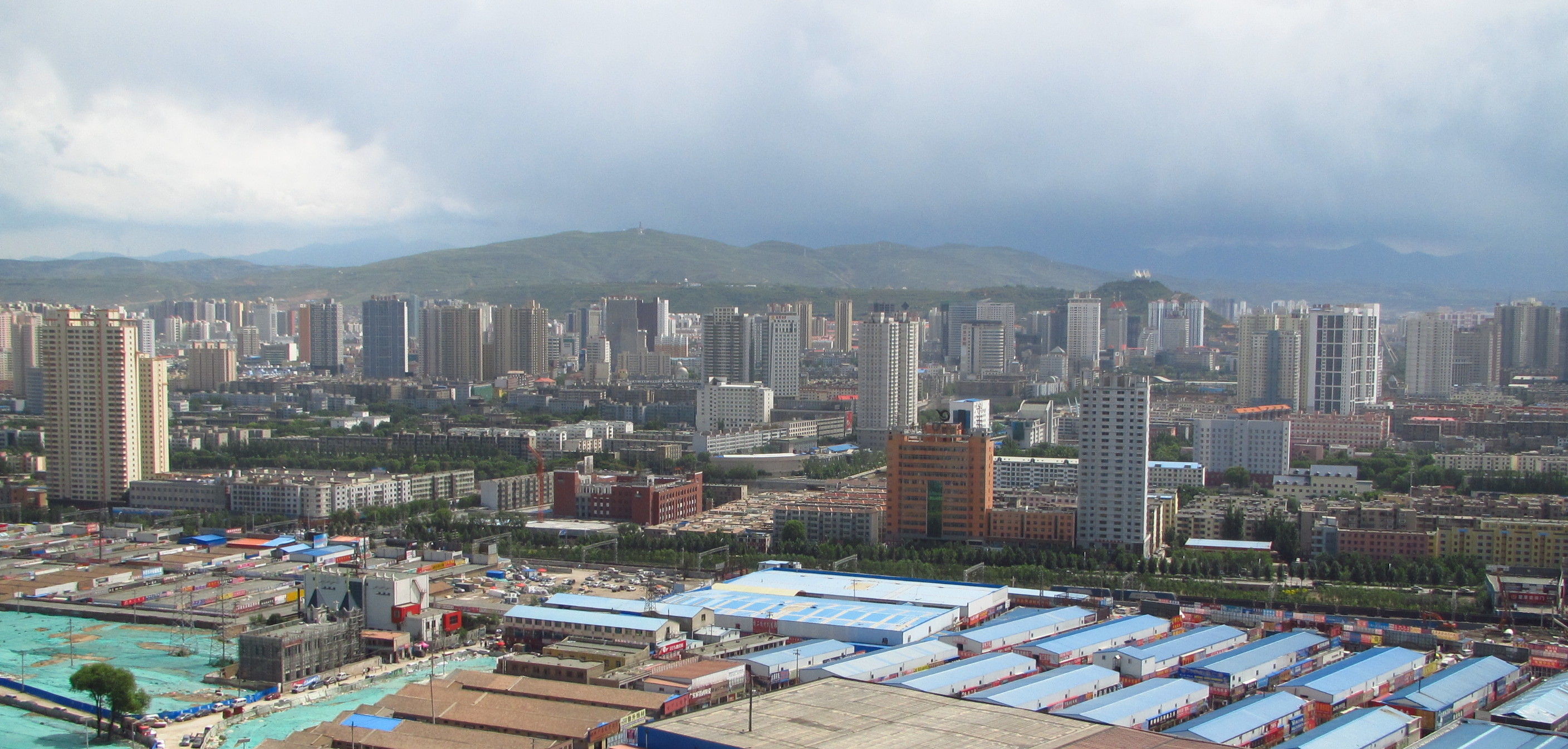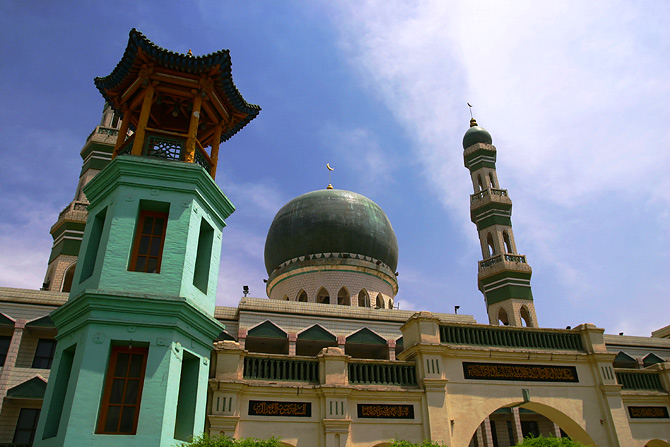|
G0612 Xining–Hotan Expressway
The G0612 Xining–Hotan Expressway () is a partially completed expressway in that connects Xining, the capital of Qinghai, with Hotan, Xinjiang. The section near Xining forms a southern beltway around the city. Between Xining and Hotan, it will pass along Huangyuan, Ruoqiang, Qiemo Qiemo may refer to: * Qiemo County Qiemo County ( zh, c= ) as the official romanized name, also transliterated from Uyghur as Qarqan County ( Uyghur: ; zh, c=恰尔羌县), is a county under the administration of the Bayin'gholin Mongol Autonom ..., Minfeng and Yutian. References {{DEFAULTSORT:G0612 Xining-Hotan Expressway Chinese national-level expressways Expressways in Qinghai Expressways in Xinjiang ... [...More Info...] [...Related Items...] OR: [Wikipedia] [Google] [Baidu] |
Hotan
Hotan (also known by other names) is a major oasis town in southwestern Xinjiang, an autonomous region in Northwestern China. The city proper of Hotan broke off from the larger Hotan County to become an administrative area in its own right in August 1984. It is the seat of Hotan Prefecture. With a population of 408,900 (2018 census), Hotan is situated in the Tarim Basin some southwest of the regional capital, Ürümqi. It lies just north of the Kunlun Mountains, which are crossed by the Sanju, Hindutash and Ilchi passes. The town, located southeast of Yarkant County and populated almost exclusively by Uyghurs, is a minor agricultural center. An important station on the southern branch of the historic Silk Road, Hotan has always depended on two strong rivers, the Karakash River and the White Jade River, to provide the water needed to survive on the southwestern edge of the vast Taklamakan Desert. The White Jade River still provides water and irrigation for the town and o ... [...More Info...] [...Related Items...] OR: [Wikipedia] [Google] [Baidu] |
Xinjiang
Xinjiang,; , SASM/GNC romanization, SASM/GNC: Chinese postal romanization, previously romanized as Sinkiang, officially the Xinjiang Uygur Autonomous Region (XUAR), is an Autonomous regions of China, autonomous region of the China, People's Republic of China (PRC), located in the Northwest China, northwest of the country at the crossroads of Central Asia and East Asia. Being the List of Chinese administrative divisions by area, largest province-level division of China by area and the List of the largest country subdivisions by area, 8th-largest country subdivision in the world, Xinjiang spans over and has about 25 million inhabitants. Xinjiang Borders of China, borders the countries of Afghanistan, India, Kazakhstan, Kyrgyzstan, Mongolia, Pakistan, Russia, and Tajikistan. The rugged Karakoram, Kunlun Mountains, Kunlun and Tian Shan mountain ranges occupy much of Xinjiang's borders, as well as its western and southern regions. The Aksai Chin and Trans-Karakoram Tract regions ... [...More Info...] [...Related Items...] OR: [Wikipedia] [Google] [Baidu] |
Xining
Xining is the Capital (political), capital and most populous city of Qinghai province in western China and the largest city on the Tibetan Plateau. As of the 2020 census, it had 2,467,965 inhabitants (2,208,708 as of 2010), of whom 1,954,795 lived in the built-up (or metro) area made of 5 urban districts. The city lies in the Huangshui River, Huangshui River Valley, also known as Tsongkha (Tibetan script, Tibetan: ཙོང་ཁ་), and owing to its high altitude, has a cool climate on the borderline between Semi-arid climate#Cold semi-arid climates, cool semi-arid and dry winter humid continental climate, humid continental. Xining was a commercial hub along the Northern Silk Road's Hexi Corridor for over 2000 years, and was a stronghold of the Han dynasty, Han, Sui dynasty, Sui, Tang dynasty, Tang, and Song dynasty, Song dynasties' resistance against nomadic attacks from the west. Although long a part of Gansu province, Xining was added to Qinghai in 1928. Xining holds sites ... [...More Info...] [...Related Items...] OR: [Wikipedia] [Google] [Baidu] |
Qinghai
Qinghai is an inland Provinces of China, province in Northwestern China. It is the largest provinces of China, province of China (excluding autonomous regions) by area and has the third smallest population. Its capital and largest city is Xining. Qinghai borders Gansu on the northeast, Xinjiang on the northwest, Sichuan on the southeast and the Tibet Autonomous Region on the southwest. Qinghai province was established in 1928 during the period of the Republic of China (1912–1949), Republic of China, and until 1949 was ruled by Hui people, Chinese Muslim warlords known as the Ma clique. The Chinese language, Chinese name "Qinghai" is after Qinghai Lake, the largest lake in China. The lake is known as Tso ngon in Tibetan, and as Kokonor Lake in English, derived from the Mongol Oirat language, Oirat name for Qinghai Lake. Both Tso ngon and Kokonor are names found in historic documents to describe the region.Gangchen Khishong, 2001. ''Tibet and Manchu: An Assessment of Tibet-Man ... [...More Info...] [...Related Items...] OR: [Wikipedia] [Google] [Baidu] |
Huangyuan County
Huangyuan County () is a county of Qinghai Province, China, it is under the administration of the prefecture-level city of Xining, the capital of Qinghai. It is under the administration of Xining city. The county seat is Chengguan Town, known in Mongolian as Dan Gar and in Tibetan as Tongkor. The remains of Ladrolne Gompa and Rali Hermitage may be seen between Haiyan and Tongkor. A branch of Tongkor Monastery, known as Ganden Tengyeling (Ch. Cinghosi), just to the northwest of the Chengguan is also in ruins.Dorje (1999), p. 536. Subdivisions Huangyuan County is divided into 2 towns, 6 townships, and 1 ethnic township: * Chengguan Town () * Dahua Town () * Dongxia Township () * Heping Township () * Bohang Township () * Shenzhong Township () * Bayan Township () * Sizhai Township () * Nyida Tibetan Ethnic Township (, ) Climate Tourist sites *Dan Gar Ancient Town, the historic core of Chengguan Town, a historic trading town. * Riyue Mountain and the remains of Tongko ... [...More Info...] [...Related Items...] OR: [Wikipedia] [Google] [Baidu] |
Ruoqiang County
Ruoqiang County ( zh, s= ) as the official romanized name, also SASM/GNC romanization#Uyghur, transliterated from Uyghur as Qakilik County (; zh, links=no , s=卡克里克县), is a County (China), county in the Xinjiang Uyghur Autonomous Region, China under the administration of the Bayingolin Mongol Autonomous Prefecture. It covers an area of (about twice the size of Zhejiang province and similar to Kyrgyzstan or Senegal), making it the largest county-level division in the country. The county seat is in Ruoqiang Town. This is the location which less-detailed maps will label as "Ruoqiang". It lies at an altitude of . History The ancient settlement of Charklik (ancient settlement), Charklik was located in what is today Ruoqiang County. The Charkhlik Revolt took place here in 1935 when Uyghurs revolted against the Hui people, Hui-dominated Tunganistan, which was controlled by the 36th Division (National Revolutionary Army). The Uyghurs were defeated. The county was establishe ... [...More Info...] [...Related Items...] OR: [Wikipedia] [Google] [Baidu] |
Qiemo County
Qiemo County ( zh, c= ) as the official romanized name, also transliterated from Uyghur as Qarqan County ( Uyghur: ; zh, c=恰尔羌县), is a county under the administration of the Bayin'gholin Mongol Autonomous Prefecture in the Xinjiang Uyghur Autonomous Region of the People's Republic of China, bordering the Tibet Autonomous Region to the south. Its area is and, according to the 2002 census, it has a population of 60,000. The county seat is at Qiemo Town. Name "Qiemo (W-G: Ch'ieh-mo) 且末 = modern Cherchen ( zh, c=车尔臣) or Charchan (Uyghur: ''Qarqan''). There has been uncertainty about this name as Chavannes (1907), p. 156, and then Stein (1921a), Vol. I, 296 ff., gave an incorrect romanization for the first character. Chavannes, using the French EFEO romanization system, gave ''tsiu'', and Stein used the Wade-Giles equivalent, ''chü''. In fact, the character is correctly rendered ''k'ie'' in EFEO, ch'ieh in Wade-Giles and qie in pinyin. Nevertheless, there ha ... [...More Info...] [...Related Items...] OR: [Wikipedia] [Google] [Baidu] |
Niya County
Niya County ( transliterated from the Uyghur ; zh, s=尼雅县), also from Mandarin Chinese as Minfeng County ( zh, s=民丰县), is a county within the Xinjiang Uyghur Autonomous Region and is under the administration of the Hotan Prefecture. It contains an area of . According to the 2002 census, it has a population of 30,000. The county is bordered to the north by Xayar County, to the east by Qiemo/Qarqan County, to the west by Yutian / Keriya County and to the south by Ngari Prefecture in Tibet. The county seat is in the town of Niya, which is often referred to by the county name (Minfeng) as well. The Niya ruins are located 115 km north of Niya. History In the early 20th century, Aurel Stein carried out several expeditions in the area including exploration of the ancient Niya ruins. In 1945, Minfeng '' Shezhiju'' () was established. In 1947, the area became Minfeng County. In 2012, the township of Yawatongguz (Yawatongguzi) was established. In early 2015, a join ... [...More Info...] [...Related Items...] OR: [Wikipedia] [Google] [Baidu] |
Yutian County, Xinjiang
Yutian County ( zh, s=于田县), also transliterated from Uyghur as Keriya County (; zh, s=克里雅县), is a county in Hotan Prefecture, Xinjiang Uyghur Autonomous Region, China. It is based at the Keriya Town, and is separate from Hotan County, which is another county in the same prefecture. The Yutian County has an area of . According to the 2002 census, it has a population of 220,000. The county is bounded on the north by Aksu Prefecture, on the east by Minfeng/Niya County, on the west by Qira County and on the south by the Rutog and Gertse counties of the Tibet Autonomous Region. Name The county derives its Chinese name from the Kingdom of Khotan. The name was written as '' at that time. This was later changed to '' (literally, Jade Field) following the adoption of Simplified Chinese and eventually to '' in 1959. The three names have a similar pronunciation in Mandarin Chinese. "Keriya", the Latin transliteration of the Uyghur name for the county, is derived fr ... [...More Info...] [...Related Items...] OR: [Wikipedia] [Google] [Baidu] |
Chinese National-level Expressways
Chinese may refer to: * Something related to China * Chinese people, people identified with China, through nationality, citizenship, and/or ethnicity **Han Chinese, East Asian ethnic group native to China. **''Zhonghua minzu'', the supra-ethnic concept of the Chinese nation ** List of ethnic groups in China, people of various ethnicities in contemporary China ** Ethnic minorities in China, people of non-Han Chinese ethnicities in modern China ** Ethnic groups in Chinese history, people of various ethnicities in historical China ** Nationals of the People's Republic of China ** Nationals of the Republic of China ** Overseas Chinese, Chinese people residing outside the territories of mainland China, Hong Kong, Macau, and Taiwan * Sinitic languages, the major branch of the Sino-Tibetan language family ** Chinese language, a group of related languages spoken predominantly in China, sharing a written script (Chinese characters in traditional and simplified forms) *** Standard Chine ... [...More Info...] [...Related Items...] OR: [Wikipedia] [Google] [Baidu] |
Expressways In Qinghai 's ''Robot'' series
{{disambig ...
Expressway may refer to: *Controlled-access highway, the highest-grade type of highway with access ramps, lane markings, etc., for high-speed traffic *Limited-access road, a lower grade of highway or arterial road * ''Expressway'' (film), a 2016 Filipino action thriller film *Expressway, the fictional slidewalk transport system in Isaac Asimov Isaac Asimov ( ; – April 6, 1992) was an Russian-born American writer and professor of biochemistry at Boston University. During his lifetime, Asimov was considered one of the "Big Three" science fiction writers, along with Robert A. H ... [...More Info...] [...Related Items...] OR: [Wikipedia] [Google] [Baidu] |



